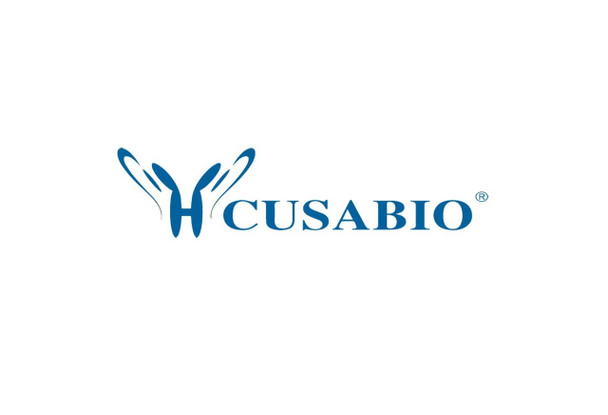Cusabio Mouse Recombinants
Recombinant Mouse Heat shock 70KDA protein 1B (Hspa1b) | CSB-EP010822MO
- SKU:
- CSB-EP010822MO
- Availability:
- 13 - 23 Working Days
Description
Recombinant Mouse Heat shock 70KDA protein 1B (Hspa1b) | CSB-EP010822MO | Cusabio
Alternative Name(s): Heat shock 70KDA protein 1 Short name: HSP70.1
Gene Names: Hspa1b
Research Areas: Others
Organism: Mus musculus (Mouse)
AA Sequence: AKNTAIGIDLGTTYSCVGVFQHGKVEIIANDQGNRTTPSYVAFTDTERLIGDAAKNQVALNPQNTVFDAKRLIGRKFGDAVVQSDMKHWPFQVVNDGDKPKVQVNYKGESRSFFPEEISSMVLTKMKEIAEAYLGHPVTNAVITVPAYFNDSQRQATKDAGVIAGLNVLRIINEPTAAAIAYGLDRTGKGERNVLIFDLGGGTFDVSILTIDDGIFEVKATAGDTHLGGEDFDNRLVSHFVEEFKRKHKKDISQNKRAVRRLRTACERAKRTLSSSTQASLEIDSLFEGIDFYTSITRARFEELCSDLFRGTLEPVEKALRDAKMDKAQIHDLVLVGGSTRIPKVQKLLQDFFNGRDLNKSINPDEAVAYGAAVQAAILMGDKSENVQDLLLLDVAPLSLGLETAGGVMTALIKRNSTIPTKQTQTFTTYSDNQPGVLIQVYEGERAMTRDNNLLGRFELSGIPPAPRGVPQIEVTFDIDANGILNVTATDKSTGKANKITITNDKGRLSKEEIERMVQEAERYKAEDEVQRDRVAAKNALESYAFNMKSAVEDEGLKGKLSEADKKKVLDKCQEVISWLDSNTLADKEEFVHKREELERVCSPIISGLYQGAGAPGAGGFGAQAPPKGASGSGPTIEEVD
Source: E.coli
Tag Info: N-terminal 6xHis-SUMO-tagged
Expression Region: 2-642aa
Sequence Info: Full Length of Mature Protein
MW: 86 kDa
Purity: Greater than 90% as determined by SDS-PAGE.
Relevance: In cooperation with other chaperones, Hsp70s stabilize preexistent proteins against aggregation and mediate the folding of newly translated polypeptides in the cytosol as well as within organelles. These chaperones participate in all these processes through their ability to recognize nonnative conformations of other proteins. They bind extended peptide segments with a net hydrophobic character exposed by polypeptides during translation and membrane translocation, or following stress-induced damage. Essential for STUB1-mediated ubiquitination and degradation of FOXP3 in regulatory T-cells (Treg) during inflammation.
Reference: "Characterization and sequence of a mouse hsp70 gene and its expression in mouse cell lines."Hunt C., Calderwood S.Gene 87:199-204(1990)
Storage: The shelf life is related to many factors, storage state, buffer ingredients, storage temperature and the stability of the protein itself. Generally, the shelf life of liquid form is 6 months at -20?/-80?. The shelf life of lyophilized form is 12 months at -20?/-80?.
Notes: Repeated freezing and thawing is not recommended. Store working aliquots at 4? for up to one week.
Function: Molecular chaperone implicated in a wide variety of cellular processes, including protection of the proteome from stress, folding and transport of newly synthesized polypeptides, activation of proteolysis of misfolded proteins and the formation and dissociation of protein complexes. Plays a pivotal role in the protein quality control system, ensuring the correct folding of proteins, the re-folding of misfolded proteins and controlling the targeting of proteins for subsequent degradation. This is achieved through cycles of ATP binding, ATP hydrolysis and ADP release, mediated by co-chaperones. The co-chaperones have been shown to not only regulate different steps of the ATPase cycle, but they also have an individual specificity such that one co-chaperone may promote folding of a substrate while another may promote degradation. The affinity for polypeptides is regulated by its nucleotide bound state. In the ATP-bound form, it has a low affinity for substrate proteins. However, upon hydrolysis of the ATP to ADP, it undergoes a conformational change that increases its affinity for substrate proteins. It goes through repeated cycles of ATP hydrolysis and nucleotide exchange, which permits cycles of substrate binding and release. The co-chaperones are of three types
Involvement in disease:
Subcellular Location: Cytoplasm, Cytoplasm, cytoskeleton, microtubule organizing center, centrosome
Protein Families: Heat shock protein 70 family
Tissue Specificity: Testis-specific.
Paythway:
Form: Liquid or Lyophilized powder
Buffer: If the delivery form is liquid, the default storage buffer is Tris/PBS-based buffer, 5%-50% glycerol. If the delivery form is lyophilized powder, the buffer before lyophilization is Tris/PBS-based buffer, 6% Trehalose, pH 8.0.
Reconstitution: We recommend that this vial be briefly centrifuged prior to opening to bring the contents to the bottom. Please reconstitute protein in deionized sterile water to a concentration of 0.1-1.0 mg/mL.We recommend to add 5-50% of glycerol (final concentration) and aliquot for long-term storage at -20?/-80?. Our default final concentration of glycerol is 50%. Customers could use it as reference.
Uniprot ID: P17879
HGNC Database Link: N/A
UniGene Database Link: UniGene
KEGG Database Link: KEGG
STRING Database Link: STRING
OMIM Database Link: N/A









